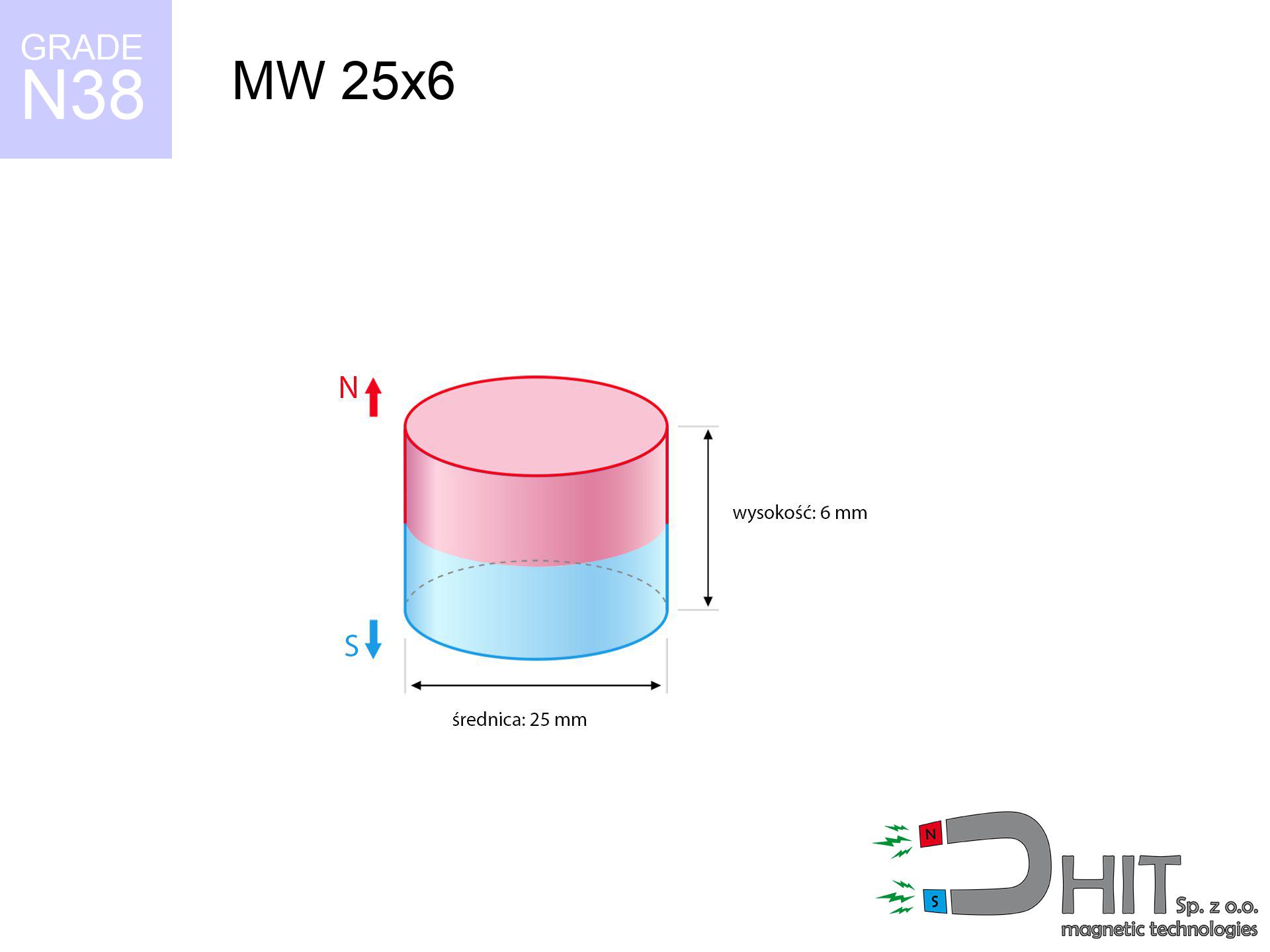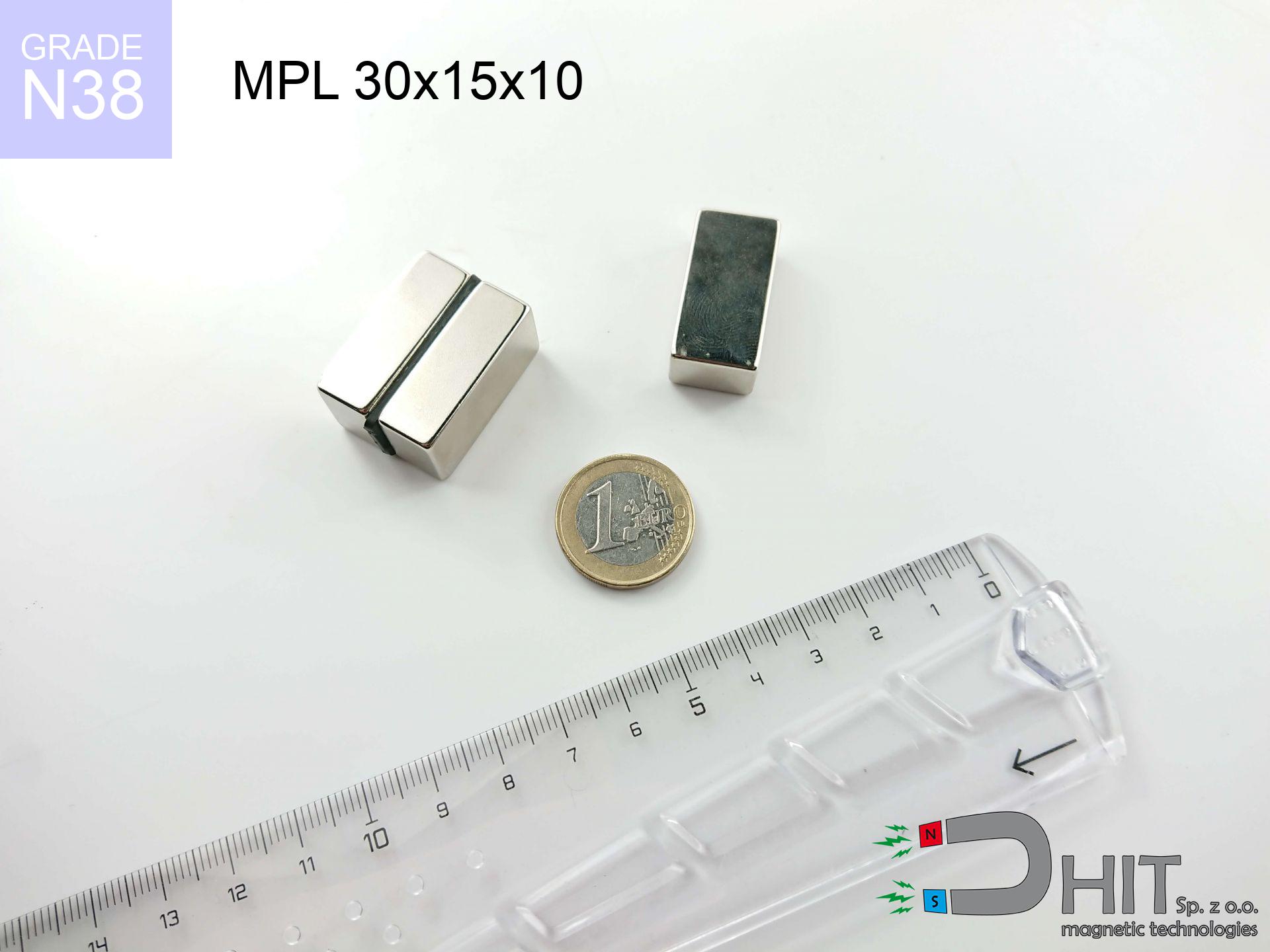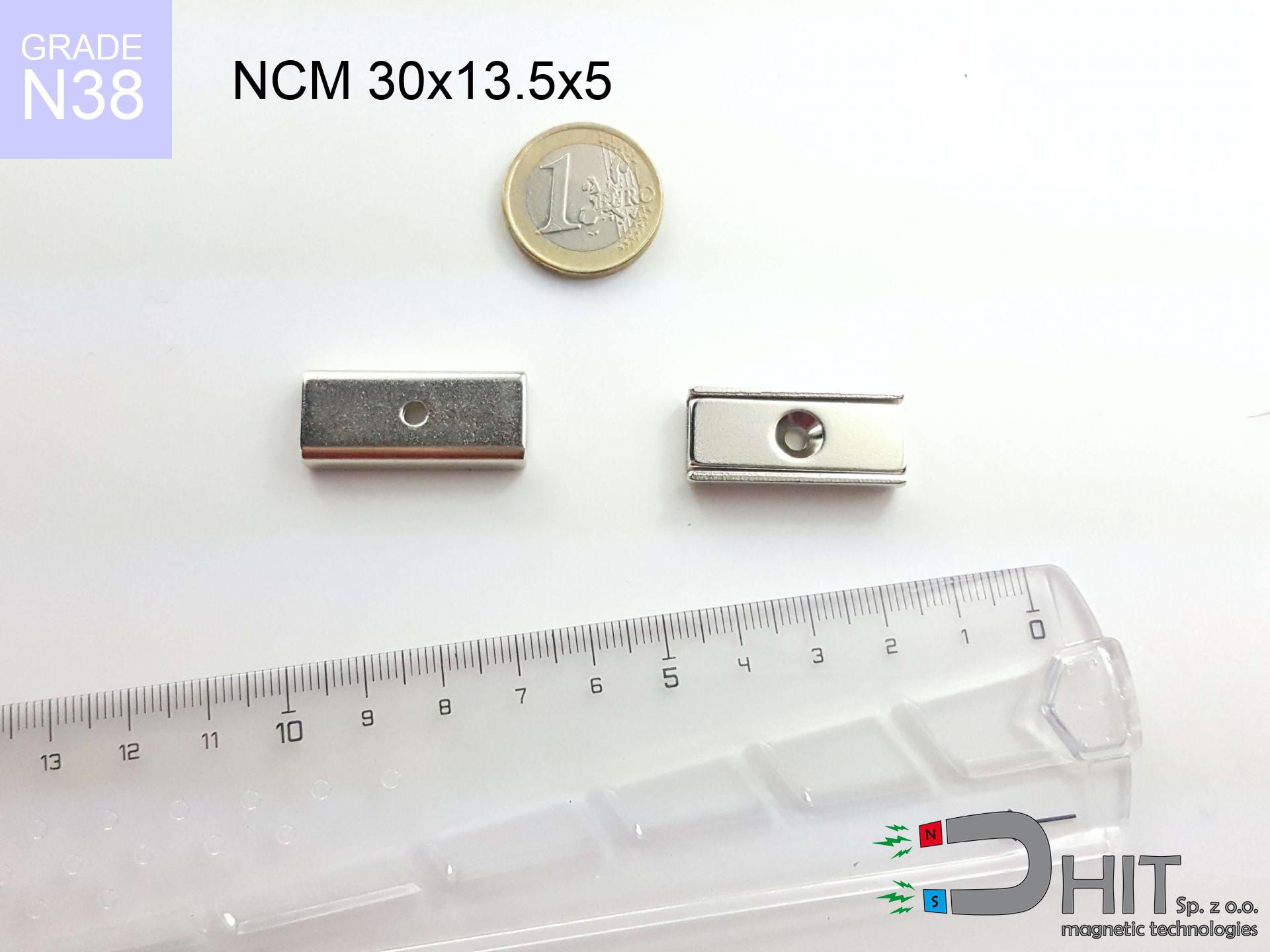MW 25x6 / N38 - cylindrical magnet
cylindrical magnet
Catalog no 010050
GTIN: 5906301810490
Diameter Ø [±0,1 mm]
25 mm
Height [±0,1 mm]
6 mm
Weight
22.09 g
Magnetization Direction
↑ axial
Load capacity
8.29 kg / 81.3 N
Magnetic Induction
268.21 mT
Coating
[NiCuNi] nickel
7.40 ZŁ with VAT / pcs + price for transport
6.02 ZŁ net + 23% VAT / pcs
bulk discounts:
Need more?Need help making a decision?
Give us a call
+48 888 99 98 98
alternatively drop us a message by means of
form
the contact page.
Lifting power as well as structure of neodymium magnets can be verified using our
power calculator.
Order by 14:00 and we’ll ship today!
Magnetic properties of material N38
Physical properties of sintered neodymium magnets Nd2Fe14B at 20°C
Shopping tips
Advantages as well as disadvantages of rare earth magnets.
In addition to their magnetic capacity, neodymium magnets provide the following advantages:
- They retain full power for almost 10 years – the drop is just ~1% (according to analyses),
- They have excellent resistance to magnetism drop as a result of opposing magnetic fields,
- Thanks to the metallic finish, the coating of nickel, gold, or silver-plated gives an aesthetic appearance,
- Magnetic induction on the working layer of the magnet remains strong,
- Thanks to resistance to high temperature, they are capable of working (depending on the form) even at temperatures up to 230°C and higher...
- Thanks to modularity in shaping and the capacity to modify to unusual requirements,
- Fundamental importance in innovative solutions – they serve a role in data components, brushless drives, diagnostic systems, also technologically advanced constructions.
- Compactness – despite small sizes they offer powerful magnetic field, making them ideal for precision applications
Drawbacks and weaknesses of neodymium magnets: application proposals
- Susceptibility to cracking is one of their disadvantages. Upon intense impact they can break. We advise keeping them in a steel housing, which not only secures them against impacts but also raises their durability
- When exposed to high temperature, neodymium magnets suffer a drop in power. Often, when the temperature exceeds 80°C, their strength decreases (depending on the size, as well as shape of the magnet). For those who need magnets for extreme conditions, we offer [AH] versions withstanding up to 230°C
- Magnets exposed to a humid environment can rust. Therefore while using outdoors, we suggest using waterproof magnets made of rubber, plastic or other material resistant to moisture
- Due to limitations in realizing nuts and complex shapes in magnets, we propose using casing - magnetic holder.
- Health risk to health – tiny shards of magnets can be dangerous, if swallowed, which is particularly important in the context of child health protection. Additionally, small components of these magnets can complicate diagnosis medical after entering the body.
- Higher cost of purchase is one of the disadvantages compared to ceramic magnets, especially in budget applications
Magnetic strength at its maximum – what affects it?
The load parameter shown refers to the peak performance, obtained under optimal environment, meaning:
- with the contact of a yoke made of special test steel, ensuring maximum field concentration
- possessing a massiveness of at least 10 mm to avoid saturation
- characterized by lack of roughness
- with total lack of distance (no impurities)
- during pulling in a direction vertical to the mounting surface
- at temperature room level
Practical aspects of lifting capacity – factors
Bear in mind that the working load may be lower depending on the following factors, in order of importance:
- Gap (between the magnet and the metal), because even a microscopic distance (e.g. 0.5 mm) results in a drastic drop in lifting capacity by up to 50% (this also applies to paint, corrosion or dirt).
- Pull-off angle – note that the magnet has greatest strength perpendicularly. Under shear forces, the holding force drops drastically, often to levels of 20-30% of the nominal value.
- Plate thickness – insufficiently thick plate does not close the flux, causing part of the flux to be wasted to the other side.
- Steel type – low-carbon steel attracts best. Alloy steels reduce magnetic permeability and holding force.
- Surface condition – ground elements ensure maximum contact, which improves field saturation. Rough surfaces reduce efficiency.
- Heat – NdFeB sinters have a negative temperature coefficient. At higher temperatures they are weaker, and at low temperatures gain strength (up to a certain limit).
* Lifting capacity testing was conducted on a smooth plate of suitable thickness, under perpendicular forces, however under attempts to slide the magnet the lifting capacity is smaller. Moreover, even a minimal clearance {between} the magnet’s surface and the plate decreases the load capacity.
Safe handling of neodymium magnets
Data carriers
Intense magnetic fields can destroy records on credit cards, HDDs, and storage devices. Maintain a gap of min. 10 cm.
Keep away from children
Product intended for adults. Small elements pose a choking risk, leading to severe trauma. Store away from kids and pets.
GPS and phone interference
A strong magnetic field interferes with the operation of compasses in phones and GPS navigation. Maintain magnets near a device to avoid damaging the sensors.
Protective goggles
Despite the nickel coating, neodymium is delicate and not impact-resistant. Avoid impacts, as the magnet may shatter into sharp, dangerous pieces.
Implant safety
For implant holders: Powerful magnets affect medical devices. Keep minimum 30 cm distance or request help to work with the magnets.
Heat sensitivity
Regular neodymium magnets (grade N) lose power when the temperature goes above 80°C. This process is irreversible.
Caution required
Before use, read the rules. Uncontrolled attraction can break the magnet or injure your hand. Think ahead.
Crushing force
Mind your fingers. Two large magnets will join immediately with a force of several hundred kilograms, destroying anything in their path. Exercise extreme caution!
Mechanical processing
Powder created during cutting of magnets is flammable. Do not drill into magnets unless you are an expert.
Skin irritation risks
Allergy Notice: The Ni-Cu-Ni coating contains nickel. If redness occurs, cease working with magnets and wear gloves.
Safety First!
Looking for details? Read our article: Are neodymium magnets dangerous?







![SM 25x400 [2xM8] / N52 - magnetic separator SM 25x400 [2xM8] / N52 - magnetic separator](https://cdn3.dhit.pl/graphics/products/sm-25x400-2xm8-hoj.jpg)

